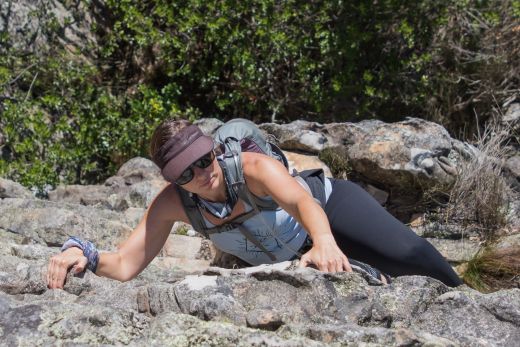Somewhere between hiking and rock climbing, there’s scrambling – an activity that puts you on terrain steep enough to require the use of your hands but not so technical that it would qualify as a climb. Some of these sections can be found on the approaches to technical rock climbs, but scrambling can be an activity in itself. With whole guidebooks dedicated to these easier ascents, there are enough established scrambling routes out there to keep even the most enthusiastic peak bagger busy for a lifetime. And all you need is a sense of adventure and a little know-how. I’ve written this article to give experienced hikers and trail runners the basics – just what you need to get out there and tackle your first few easy scrambles. It assumes that you’re comfortable in the mountains, have fundamental outdoor skills, and are prepared to up the ante, because, make no mistake – scrambling can be just as heady as roped climbing.
Scrambling vs rock climbing
The differences between scrambling and climbing can be blurry. What can seem like a moderate scramble for one person could be a climb for another. Some have suggested that scrambling involves the use of handholds only for balance whereas climbers use them to support their body weight. But there are also technical slab climbs that require only balance and adept use of friction, and scrambles that require a significant amount of upper body strength.
The level of technical difficulty is generally a better way to distinguish between the two styles of ascent. A climb is anything that is harder than four in the Yosemite decimal system and requires the use of rock shoes and chalk for solid purchase on the rock (If at this point, you’re still not roped up, you’re soloing). A scramble can be done safely in a pair of trail runners or approach shoes although more difficult and exposed sections might also involve the use of a rope and climbing gear for safety. I will cover the techniques of roped scrambling in a different article. The article you’re reading right now is aimed at giving you everything you need to know before setting off on your first easy, unroped scramble.
The terrain
Some people associate scrambling with peak bagging, but the scrambler’s playground ranges from desert canyons to sea cliffs and gladed crags. These environs can throw up challenges ranging from questionable rock quality to navigational difficulties – all part of the adventure.
Route selection
The ideal route will be challenging without being dangerous. Every scramble involves some level of risk, but this should be acceptable – only a freakish and unlikely occurrence should cause an accident. Of course, it takes experience to determine what’s dangerous or unlikely, so you need to take it easy when starting out and then ramp up the difficulty gradually as you become more experienced. The grade of a route can give aspiring ascensionists an idea of how difficult and committing a route is (more about grades in a minute), but this is often an average of the difficulty over the length of the entire route. First timers will also want to know how difficult and exposed the crux sections are going to be. A good guidebook will contain everything you need to know.
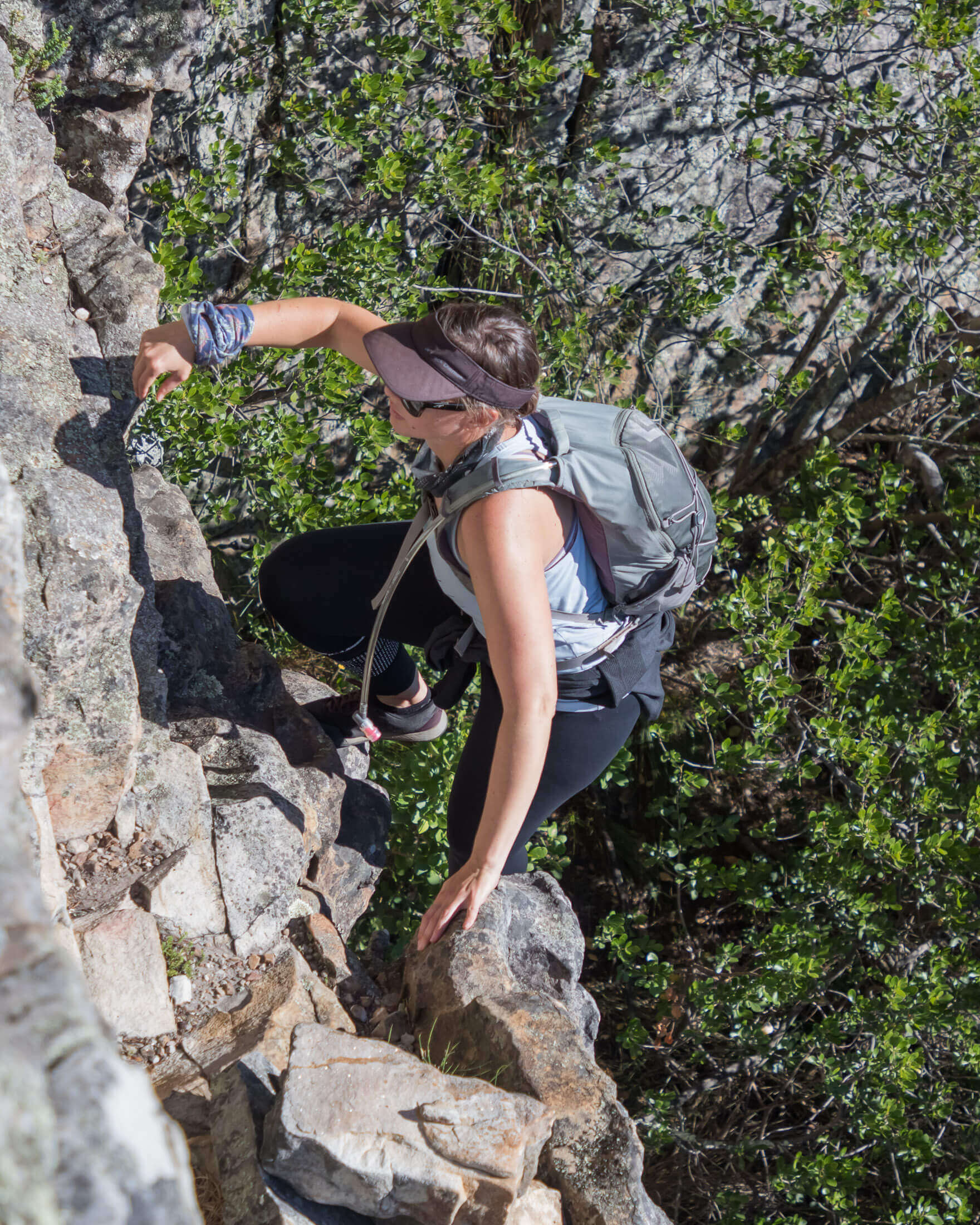
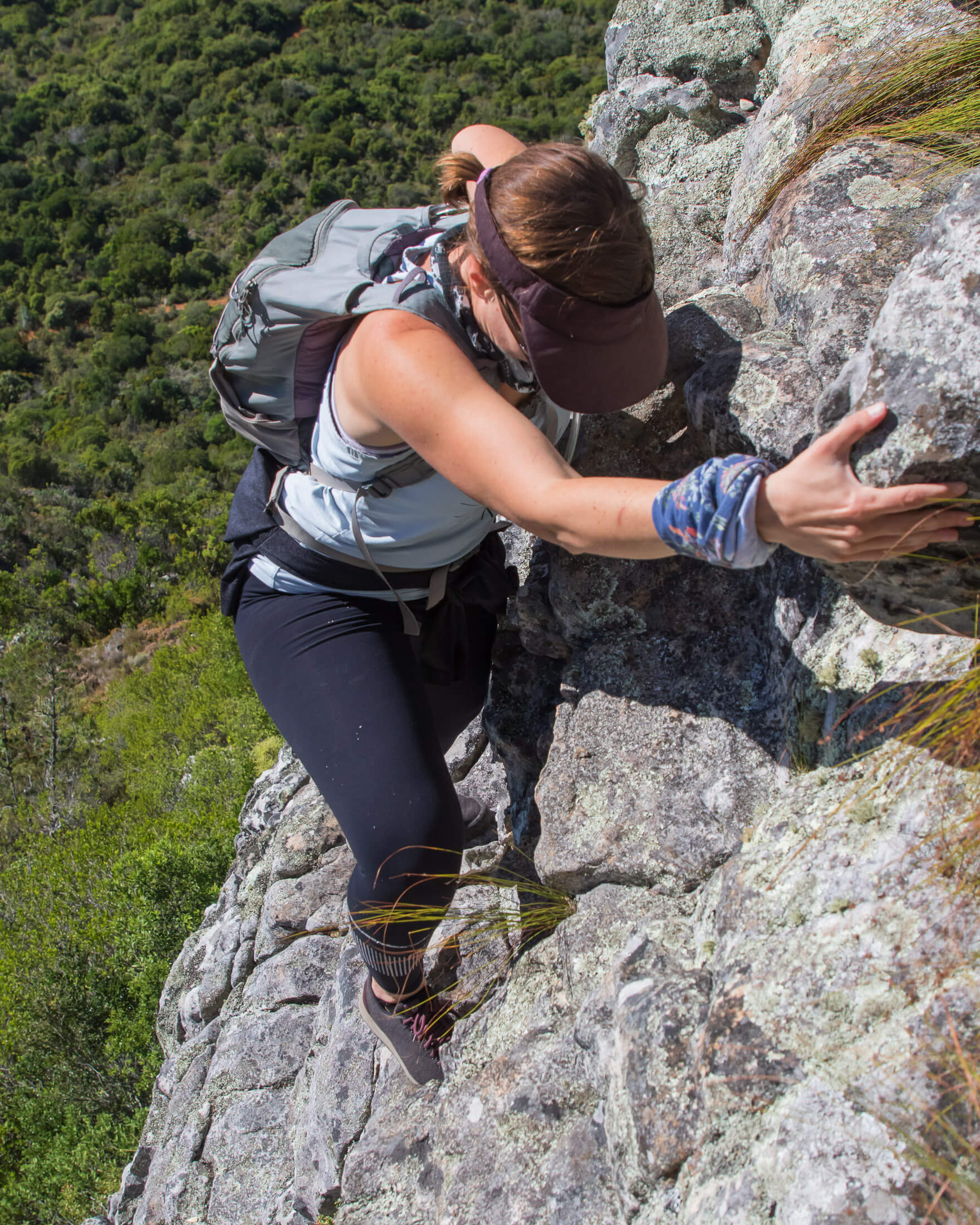
Grades
Scrambles are graded according to difficulty, but the system used varies from region to region. With the exception of the Yosemite Decimal System, which is used for grading both climbs and scrambles in North America, scrambling grades are usually different to those used for rock climbs and alpine climbs.
Yosemite Decimal System
In North America, the Yosemite Decimal System is used. According to the YDS, Class 1 terrain is a steepish walk; a Class 2 is an easy scramble that requires the occasional use of hands; and a Class 3 is a moderate scramble with some exposure – a fall here is likely to result in a serious injury. Class 4 , the most difficult grade of scramble, involves some short steep or technical sections. A rope is often advisable on such routes since a fall can be fatal.
UIAA
The UIAA grading system differs from the three other systems described here in that it doesn’t start with very easy terrain – the kind that only occasionally requires the occasional use of hands and feet. A grade I scramble in the UIAA system involves steep and occasionally exposed terrain comparable to a 3 in the YDS and a mid-grade 2 in the British system. Beyond that, a grade II scramble is comparable to a 4 in the YDS, and a grade III is similar to an easy 5.
Britain
Brits also use a similar numeral system for grading scrambles, but this only goes up to Grade 3. According to this system, a Grade 1 is essentially an exposed walking route that only requires the occasional use of hands; a Grade 2 is steeper and may contain short exposed sections that can require the use of a rope. You’re definitely going to use your hands on routes of this grade and might have to employ route finding skills. A Grade 3 is a serious scramble with some technical moves and areas of ample exposure.
South Africa
According to the South African system, a scramble graded A is nothing more than a steep walk and so corresponds to one in both the YDS and the British system. Grade B scrambles require the frequent use of hands with some moves sections being quite technical. And Grade C’s are serious undertakings that might require the use of a rope. This grade corresponds to Class 4 in the YDS and a Grade 3 in the British system.
Navigating
Some scrambles are as well defined as hiking trails. Others don’t follow any path but are marked by cairns. And the most vague routes feature no markings or signs except for a few polished sections of rock or flattened vegetation. These unmarked scrambles often zigzag along ledges and up cracks and breaks, but other more nebulous lines can follow less obvious features. Following these routes can require finely honed navigational skills – something to keep in mind if you have limited off-trail experience. Going off route can put you on difficult terrain, which you’ll want to avoid if it’s one of your first forays onto exposed rock.
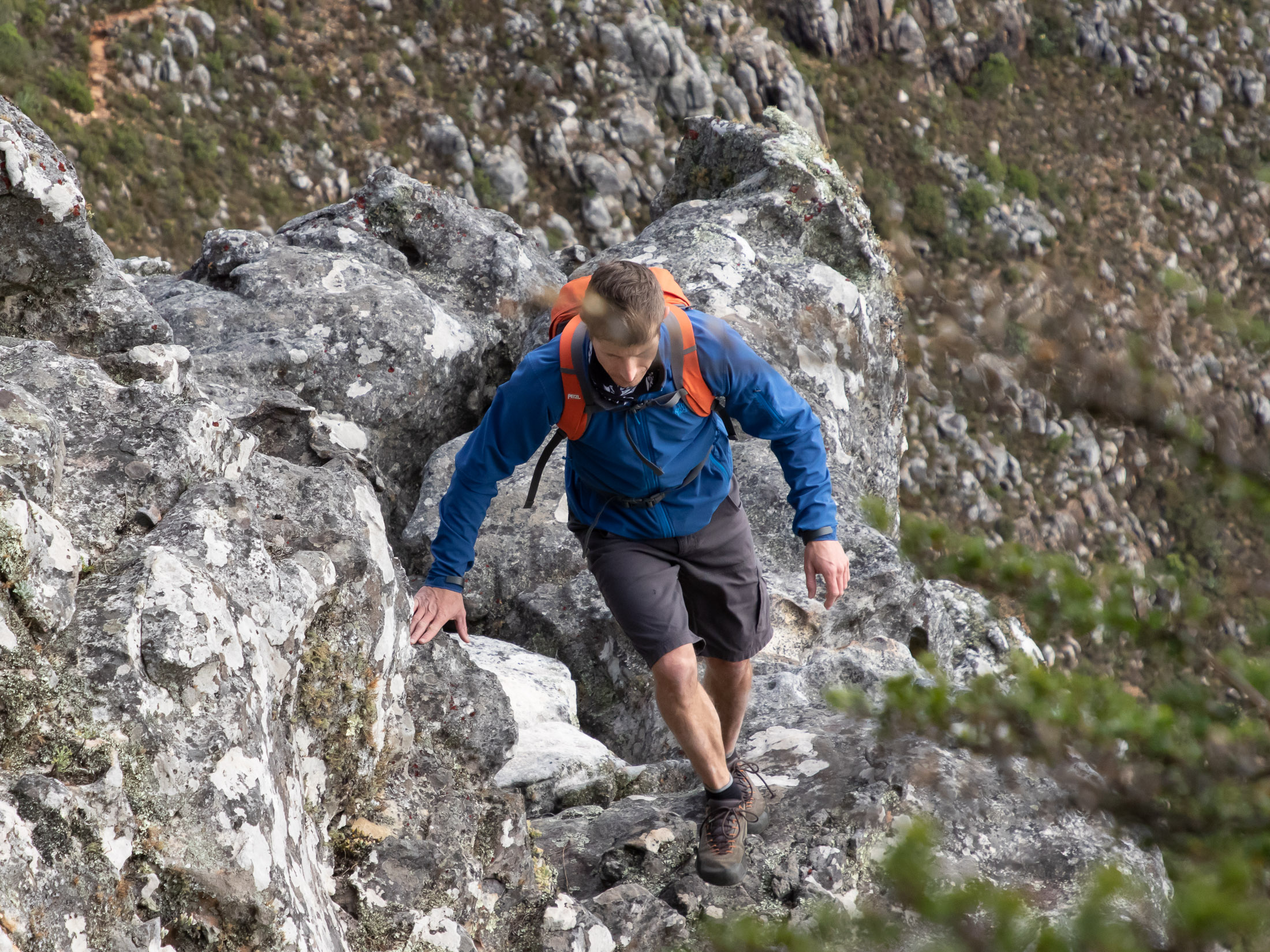
The best way to avoid going off route is to study your map and route description closely before setting off and then carry a hard copy with you (cellphone batteries tend to fade when you need them most). Some descriptions might be on the thin side with 1,000m of scrambling described in half a page of text. In such cases, you almost always want to follow the path of least resistance between points of reference. Lastly, have a good idea of how you’re going to get down. The descent is often as adventurous as the scramble itself.
Determining rock quality
The movements made while scrambling are generally much easier than those you make when rock climbing, but there are other challenges and risks. The most obvious danger is that you’re usually not roped up and have nothing to catch you in the event of a fall. The other danger is loose rock. This itself can cause a fall if you rely heavily on a detached hold, but rock fall is the more likely danger (to those below you). When doing your homework, try to find out the quality of the rock on your intended routes. If it’s described as a choss fest (very loose), it’s best to leave it until you have more experience.
Gear
In addition to the items you’d usually take on a day hike – headlamp, first aid kit, water bottle, and few extra layers – scrambling gear includes a few pieces that are a little more specialised.
Footwear
Trail shoes are sufficient for easy scrambles, but if you really get into scrambling and want to up the ante, consider getting a pair of approach shoes. These will offer better grip on rock and will be better for edging and smearing (more about these techniques in a minute). Hiking boots can also work, but they are a lot less sensitive and so don’t afford the same level of precision. My article on approach shoes explains in detail how to choose a pair. Otherwise, I can recommend one of the following.
- La Sportiva TX4 EVO (Men's at REI) (Women's at REI)
- Salewa Wildfire 2 (Men's at Backcountry) (Women's at Backcountry)
- Scarpa Zen Crux (Men's at REI) (Women's at REI)
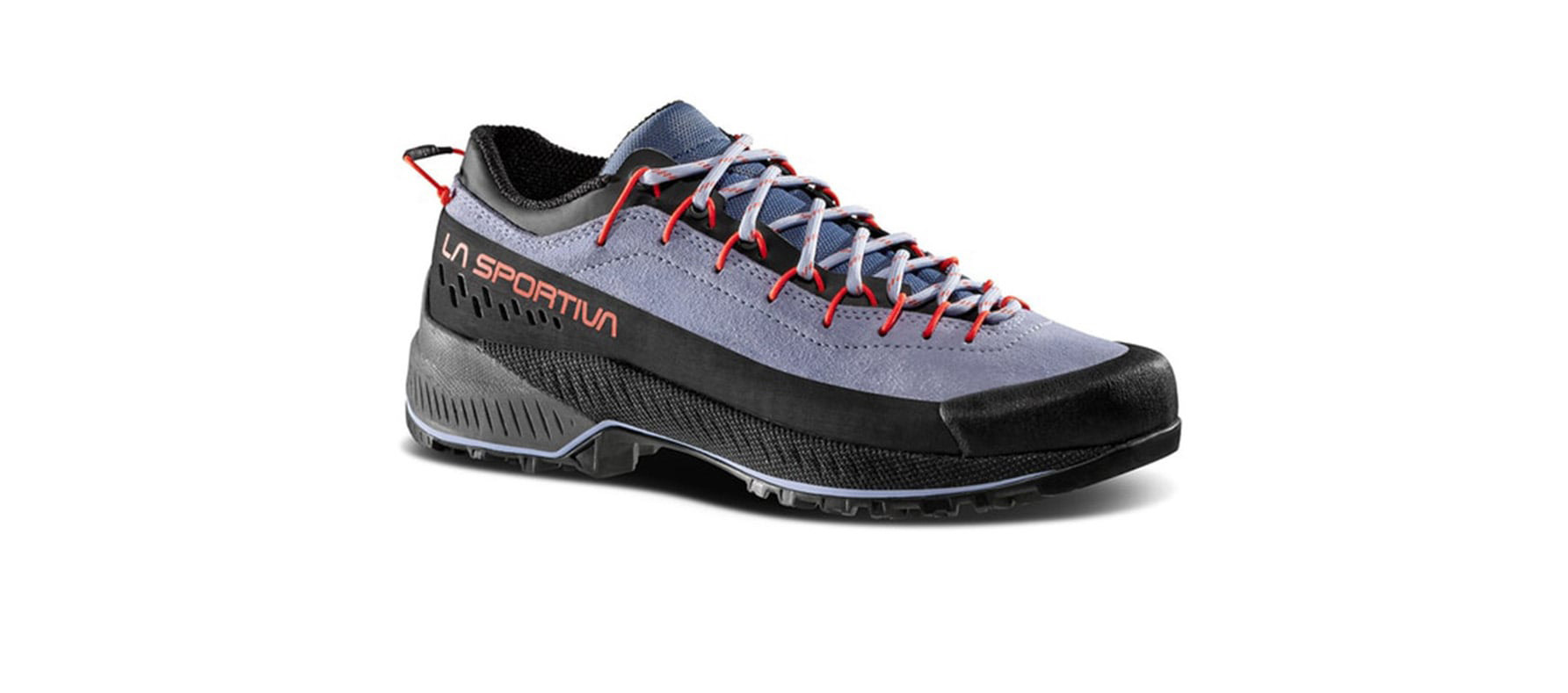
Pack
The ideal pack for scrambling is durable, low profile, and just big enough to carry all your gear (between 17 and 25 litres). You’re going to squeeze through tight spaces while wearing it, so it’s important that it’s made of a hard-wearing material and is devoid of extra straps or bungee cords that could get caught on the rock. I prefer not to use a reservoir for the same reason. I don’t want the hydration tube getting damaged or snagging when I have my chest against the rock. Packs with internal frames usually aren’t suitable since they position the pack away from your spine – you want your pack as close and snug as possible. Also check that the pack lid doesn’t restrict your movement when you try to look up.
- Black Diamond Blitz 20 (Buy at Backcountry.com)
- Osprey Mutant 22 (Buy at REI)
- Ortovox Trad Zero 24 (Buy at Backcountry.com)
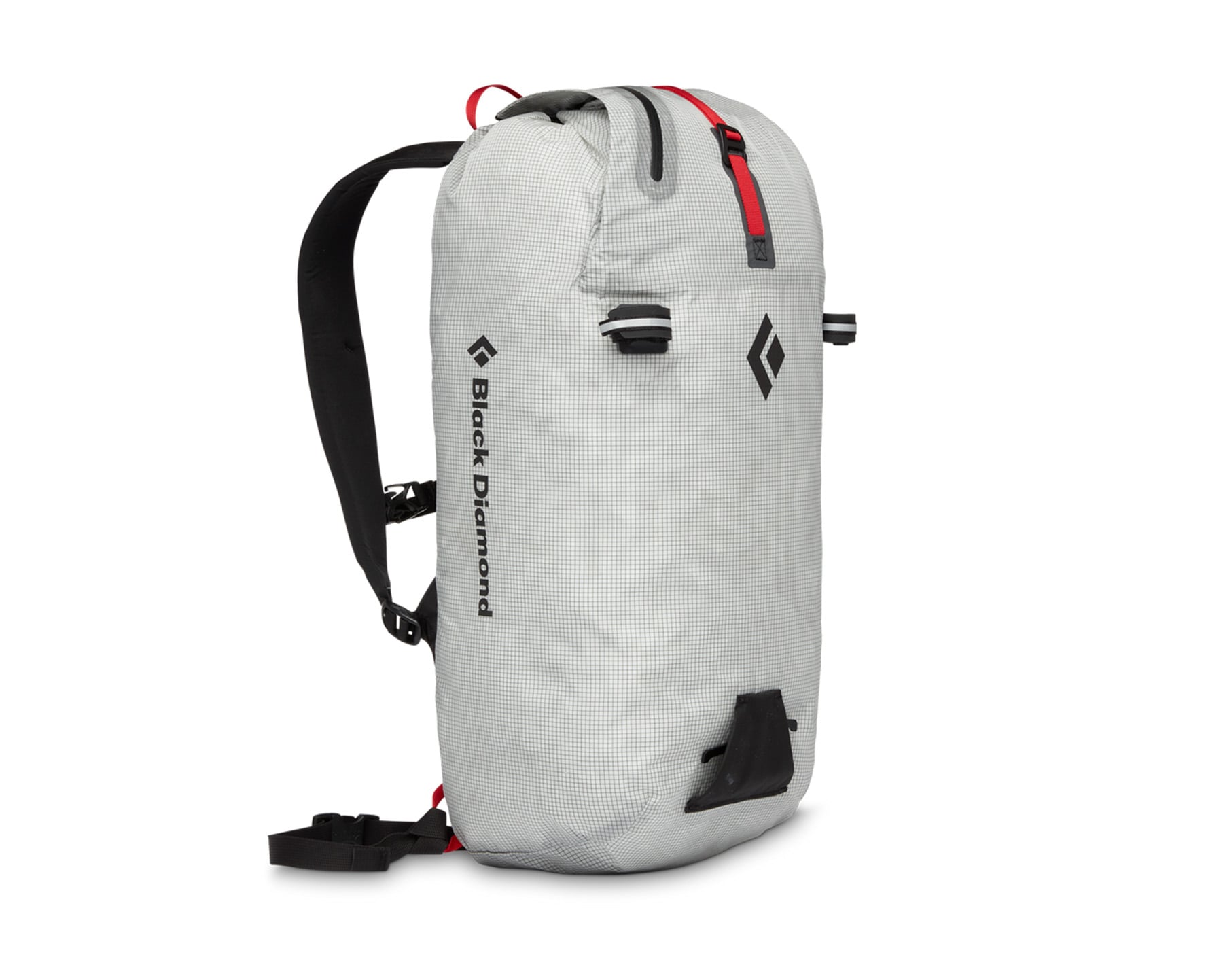
Helmet
A helmet is a good idea anytime there is any possibility of rockfall from above or if there is any chance of a fall. Modern climbing helmets weigh very little, and they don’t look nearly as dorky as their early predecessors. If you live in an area known for colder weather, size your helmet so that you can wear a thin beanie (warm hat) or buff under it. Your helmet should also have clips to keep a headlamp in place (standard on climbing helmets).
- Black Diamond Half Dome (Buy at REI)
- Mammut Skywalker 3.0 (Buy at Backcountry.com)
- Petzl Meteor (Buy at REI)
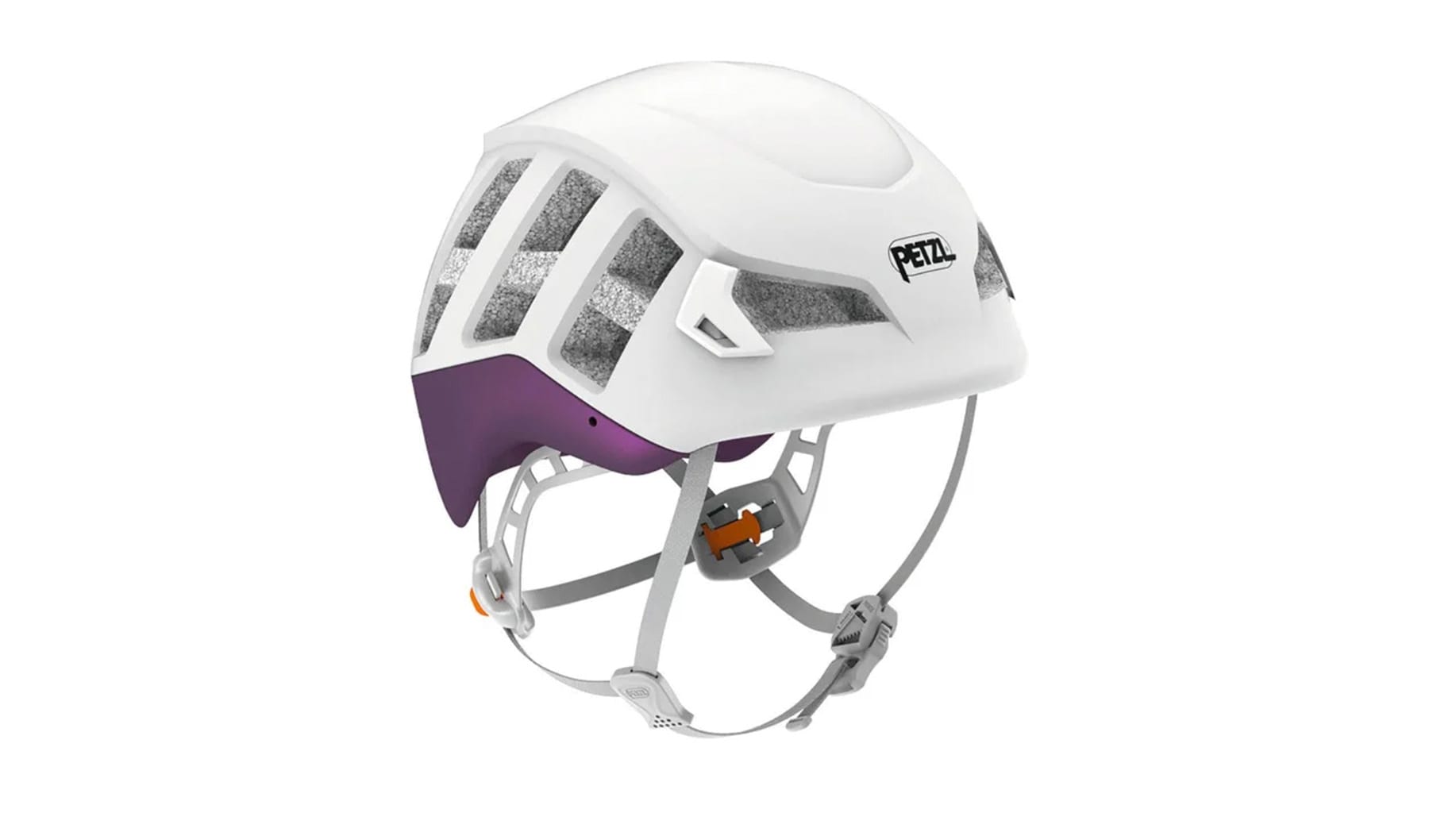
Moving over rock
Easier routes can be climbed in much the same way you’d ascend a ladder with large flat steps for your hands and feet, but as routes get more technical, the holds get smaller and more difficult to use. Some rock features will be more vertical than horizontal, forcing you to use them in ways that break from the usual reach-and-pull-down pattern. At this point you’ll need to employ rock climbing techniques like side pulling and mantling, skills that are best learned close to the ground or on easy roped climbs. But, there’s no need to get so involved just yet. To confidently ascend your first easy scramble, focus on the following five points.
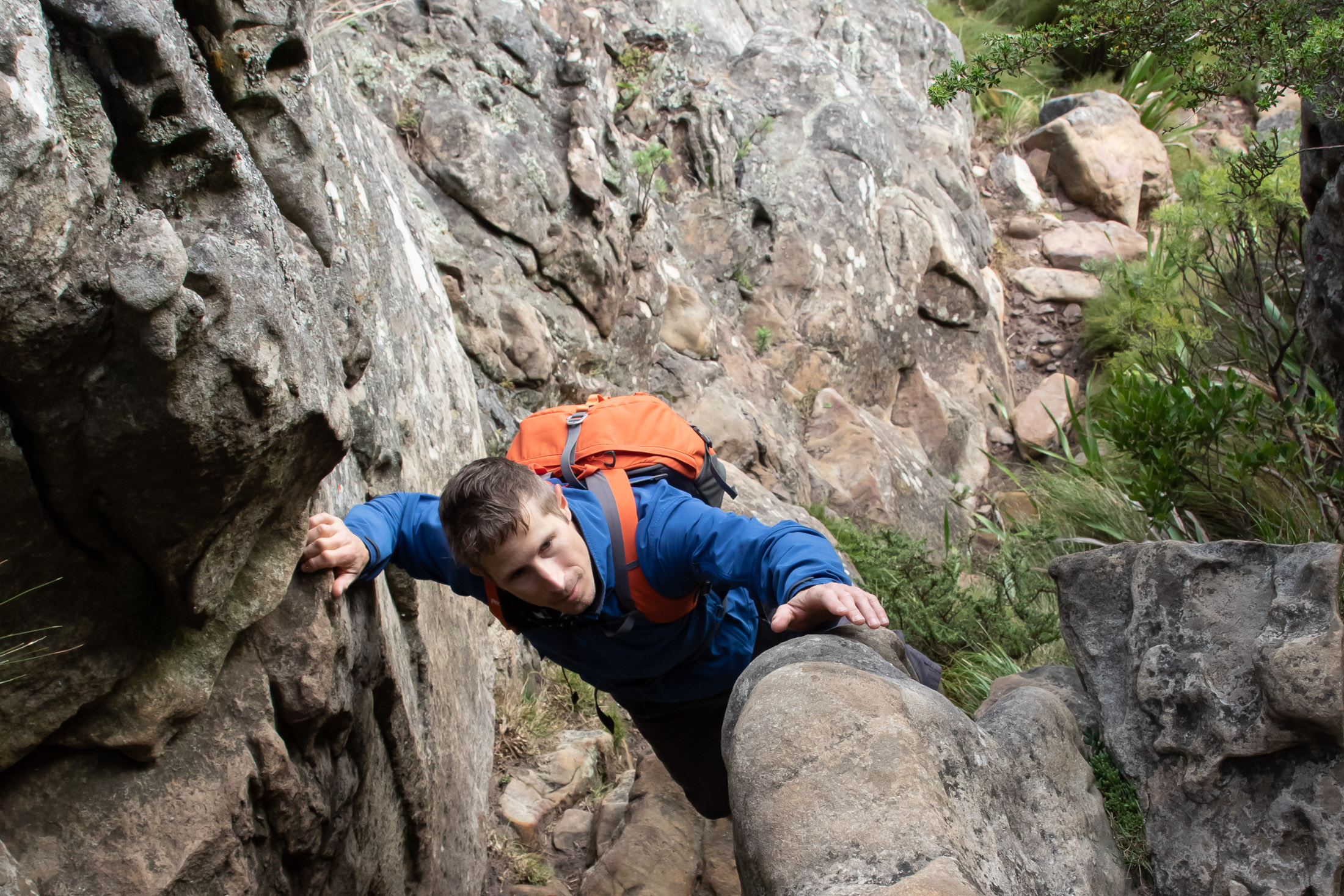
Read the rock
Reading the rock means being able to find the path of least resistance and knowing how to move as efficiently as possible – Pulling down on something with all your strength is hardly ever the most efficient way to make a move. You need to be creative and observant, always on the lookout for the best handholds and footholds. The best way to hone these skills is to go rock climbing. Top-roping allows you to confidently push your limit on a variety of terrain types – slabs, faces, cracks and chimneys – without worrying about the consequences of a fall.
Test handholds and footholds
Loose rock is a real danger, but you can reduce the risk of pulling off a detached block by testing every suspect handhold and foothold before committing your weight to it. You can also tap thinner features to determine how solid they are. If you have to use a hold that sounds hollow, do so carefully. Vegetation, too, should be treated with caution. Plants in open, windswept areas can have sturdy roots, but there’s no way of knowing how well anchored a plant is just by looking at it. When possible, test vegetation before putting all your weight on it.
Practice careful footwork
Smaller footholds won’t be big enough for you to step on with the entire front of your shoe. These smaller features require you to toe down with just the point of your shoe or edge with your shoe side-on. Other, vertically-orientated features, like cracks, can only be used by wedging your whole foot into them, while featureless slabs might require you to rely on friction alone. Again, these skills are best learned while scrambling around low craggy areas or during a rock climbing session.
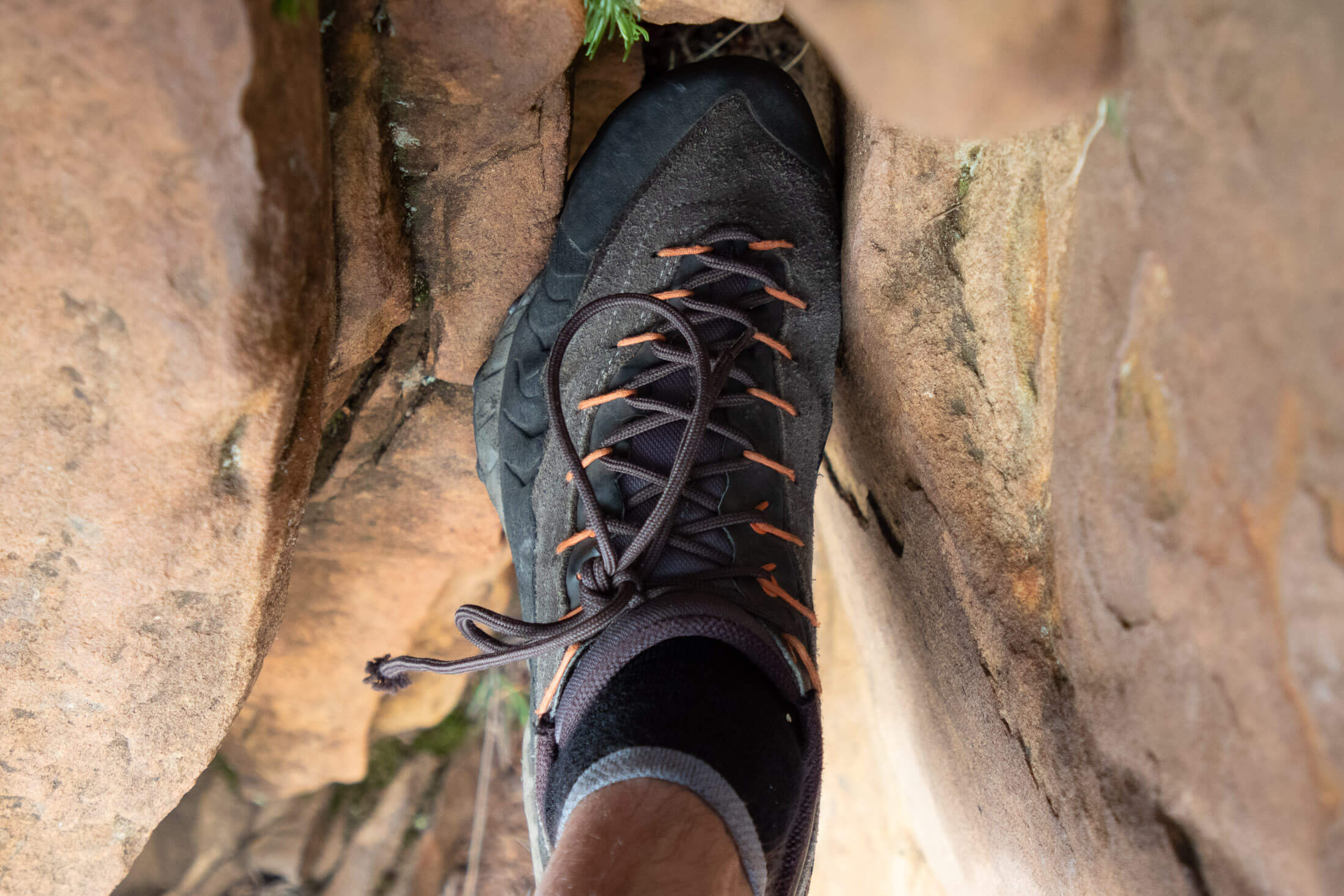
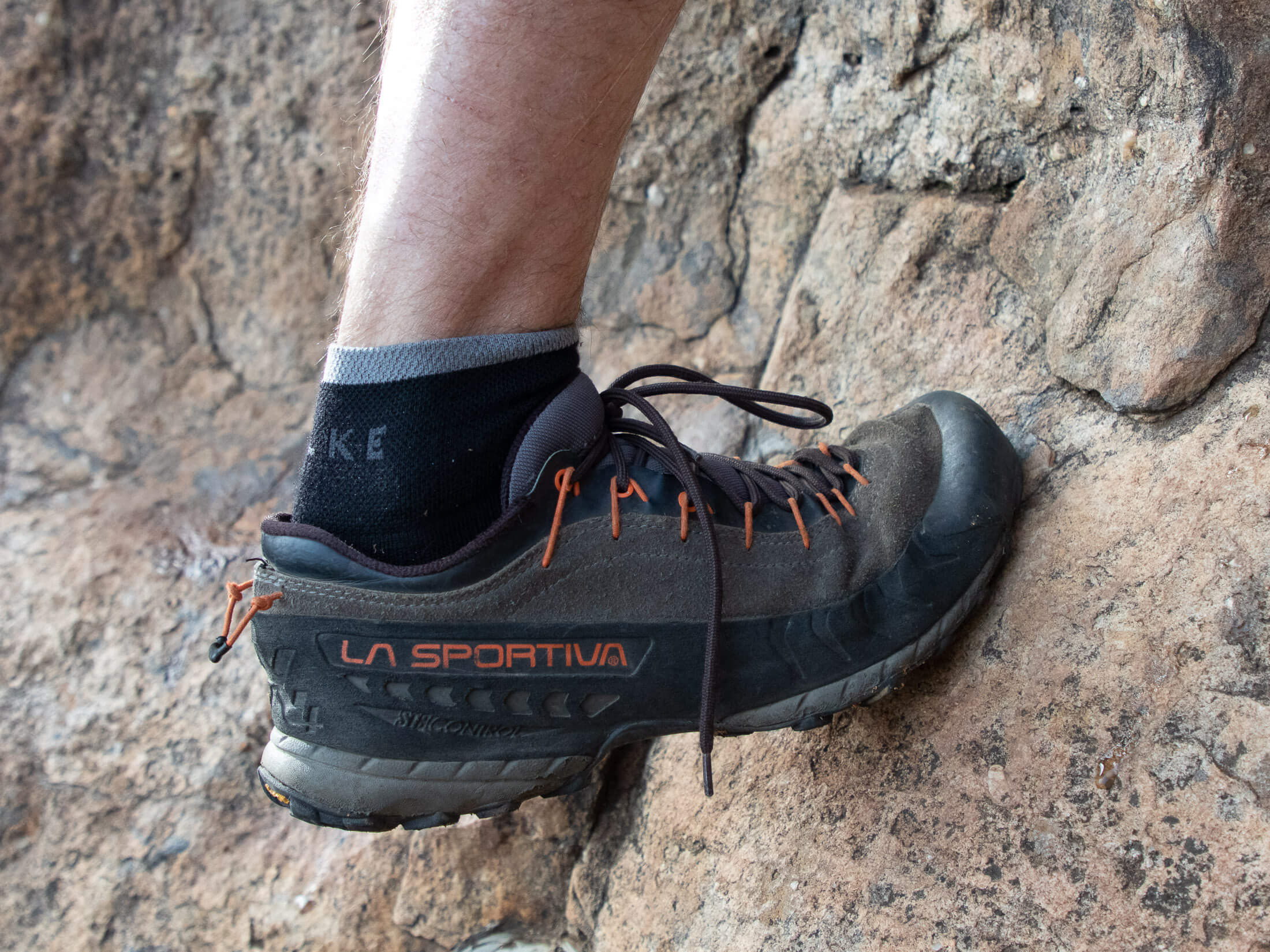
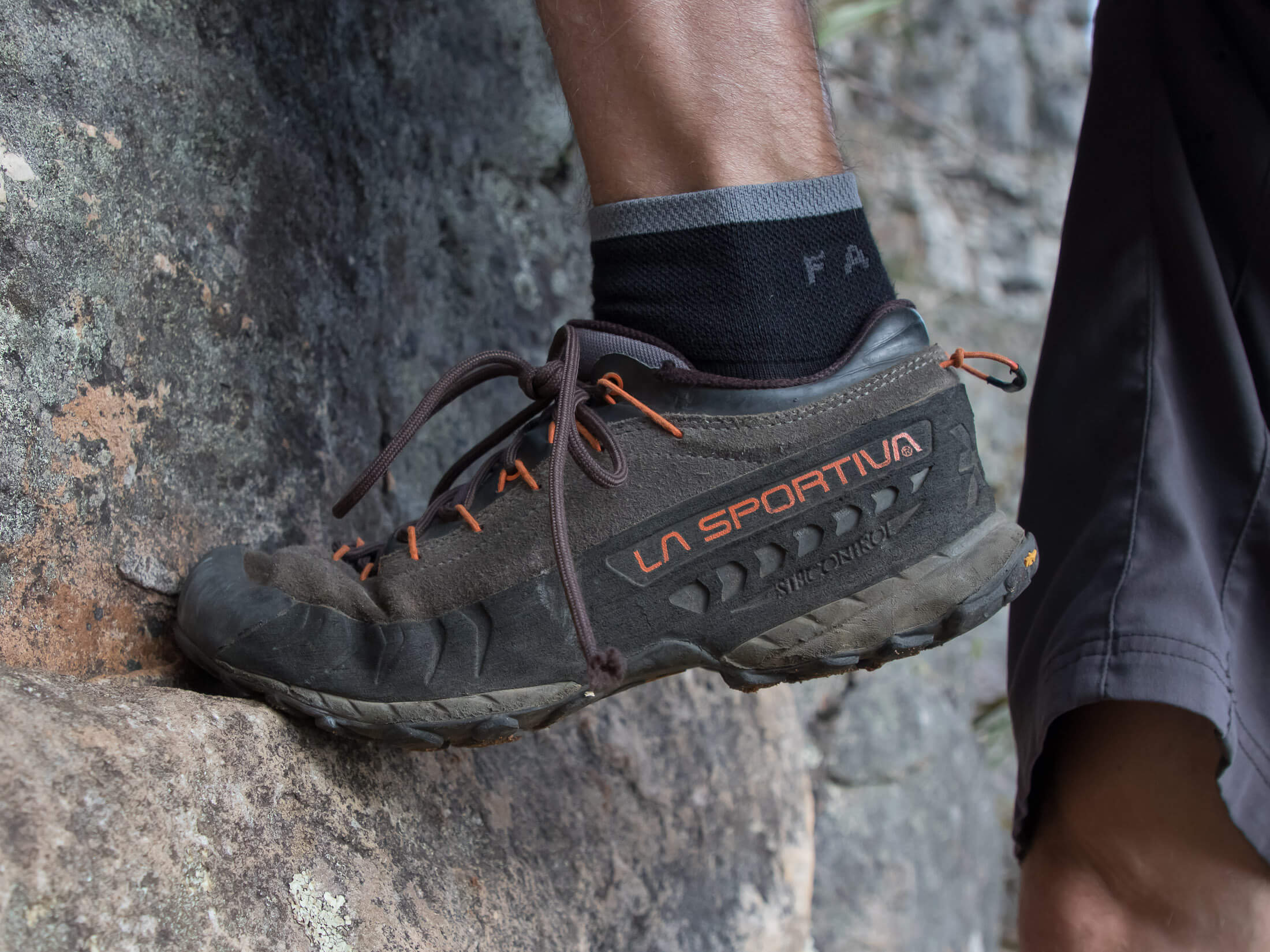
Keep three points of contact at all times
Where possible, keep three points of contact on the rock. This will help you keep your balance and control, and it will reduce the chances of a fall if you pull something loose. Move only one foot or hand up at a time, and try to put as much weight on your feet as possible. When scared (as most are when faced with heights), most new scramblers and climbers overgrip with their hands. By making a conscious effort to shift most of your weight to your feet, you’ll save the energy in your arms and will reduce the chances of you breaking a handhold.
Down climbing
In scrambling, you should never make a move that you can’t reverse. If you find yourself facing a move that’s too committing or you go off-route, you always want to be able to climb back down. This applies to descending as well – Don’t put yourself in a situation that you can’t climb out of. If you’re in an unfamiliar area, you definitely shouldn’t jump down from a ledge that you can’t get back to. The route you’re on might end at a cliff edge, forcing you to retrace your steps.
Safety
Loose rock and sketchy terrain aren’t the only dangers faced by scramblers. Fickle weather and navigational challenges can also pose a hazard to the unprepared. Keep the following in mind wherever you venture into the hills.
Let someone know where you’re going
Always pack a fully charged cell phone or satellite messenger if you own such a device – useful when there’s no signal. But also don’t rely on technology alone. Batteries die and screens break. Many emergency situations go from bad to worse when a party finds itself unable to alert rescuers to their plight or give them their location. At least the second scenario can be avoided by simply letting someone know where you’re going and what time you should be back by.
Start early
It’s easy to get lost, which can put you out there much later than expected. Navigating technical terrain in the dark is a lot more difficult than finding your way during the day and is best avoided, especially if you have limited experience or are on a route for the first time. When venturing out into unfamiliar territory, know how many hours of daylight you have and start early. If you expect to still be out close to dark, carry a headlamp and some extra batteries in your first aid kit.
Make your pack as low-profile as possible
A bulky, poorly packed bag is cumbersome and can shift your centre of gravity unexpectedly – the last thing you need when you’re trying to make a balancy move or squeeze through a narrow passage. Make your pack as compact as possible and position heavy items close to your spine. Also, try to avoid attaching anything to the outside of your pack. A runaway water bottle can be a real danger.
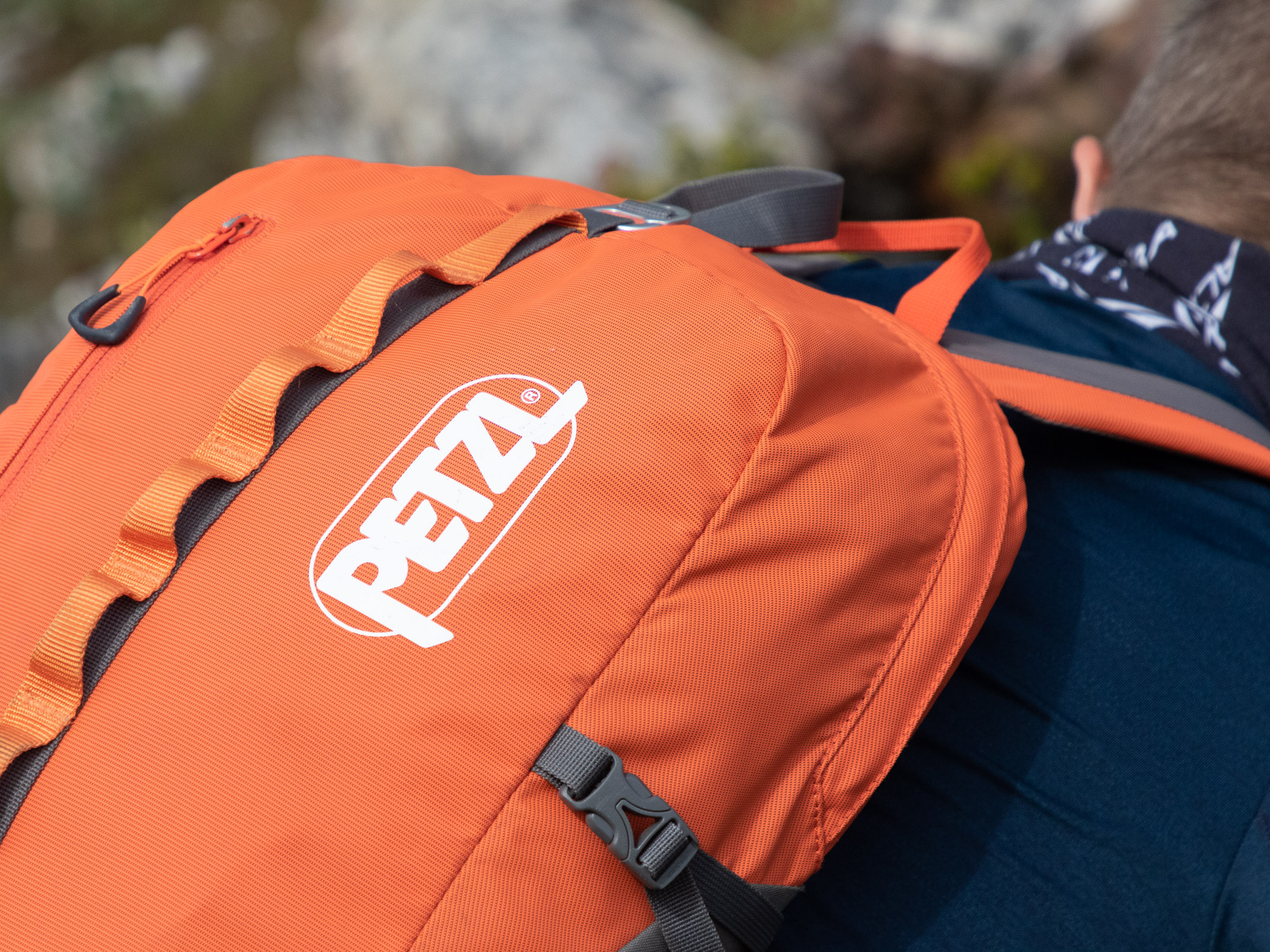
Stay out of the fall zone
Avoid scrambling directly under others when on more technical terrain. If someone higher up comes off, they could take you with them. Equally dangerous is loose rock, especially large blocks. Always treat these with caution and warn anyone underneath you. If you do knock a rock loose, shout ‘rock’ to warn those below you. The only exception to this rule is if someone is wearing a helmet and the rock is small. In this case, causing them to look up could be even more dangerous.
Have a plan to get off
You need to have a plan for getting back down once you’re finished ascending, but you also need to have an exit strategy in case you aren’t able to finish the route and have to bail. Always know where the closest exit is as well as how that would get you back onto an established return route. Lastly, don’t underestimate the descent even if it is an established route. This can be as challenging as the ascent, and some harder scramble descents even include a few rappels.
Know when to turn back
When a route gets too difficult or weather starts to move in, you have to make a decision: to continue or abort. At this point you might have to consider several things: whether you will be able to down climb if it starts to rain, whether you’ll be able to handle the navigational challenges that come with low visibility, and whether fatigue is affecting your decision making. Be aware of summit fever, which can cloud your judgement when your risk assessment should be at its sharpest. Never be too proud or stubborn to say ‘Let's turn back’.
Get out there
The only way to hone your scrambling skills is to get out there and get some experience, ramping up the difficulty gradually as you get more comfortable on steep terrain. That said, if it’s further advice and instruction you’re after, this site has many more articles on topics ranging from climbing techniques to orienteering skills – the full gamut of outdoor knowledge. Look for these in the sections accessed through the category menu, or better yet, sign up for my newsletter to get all the latest from Trail & Crag delivered straight to your inbox.
